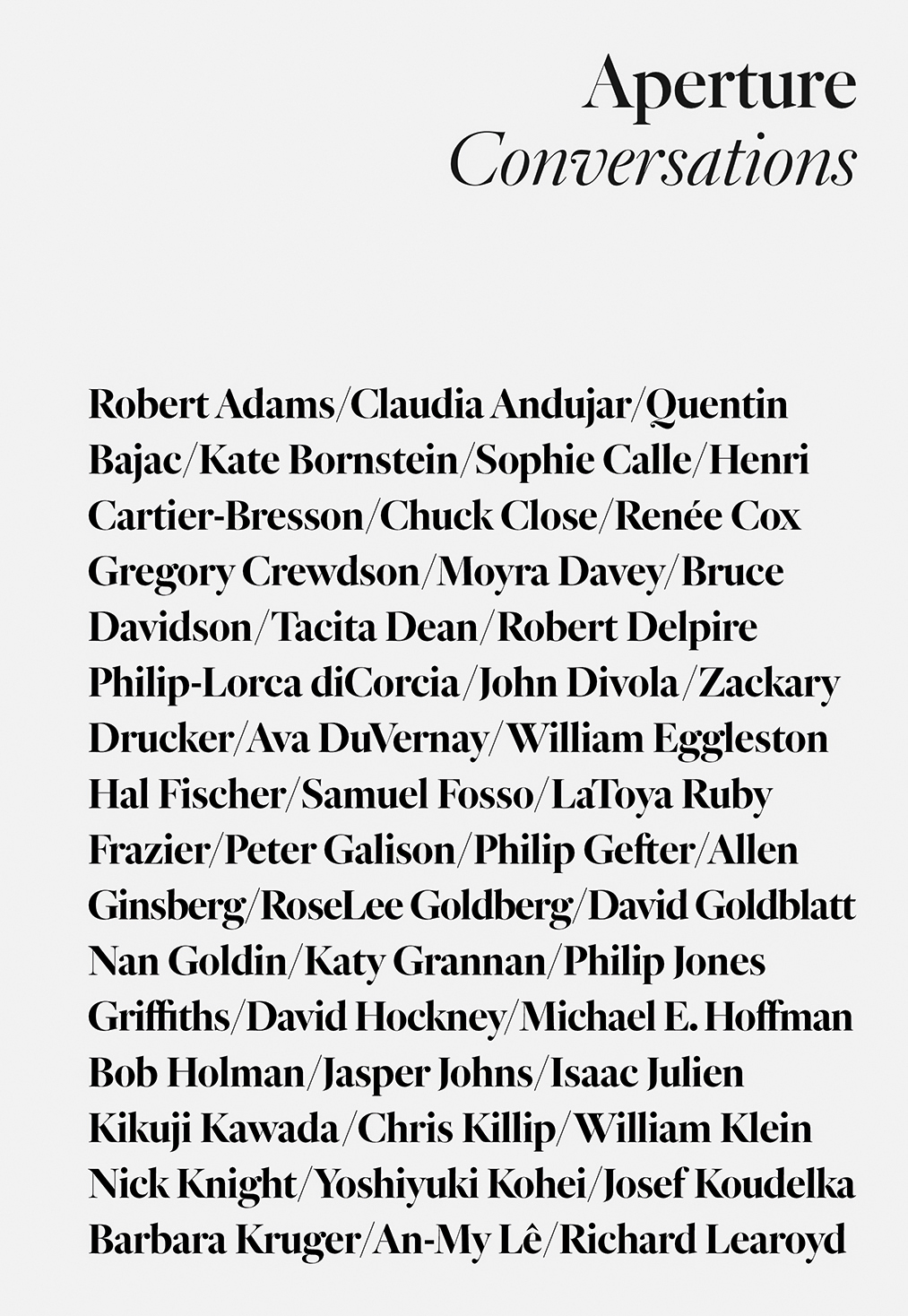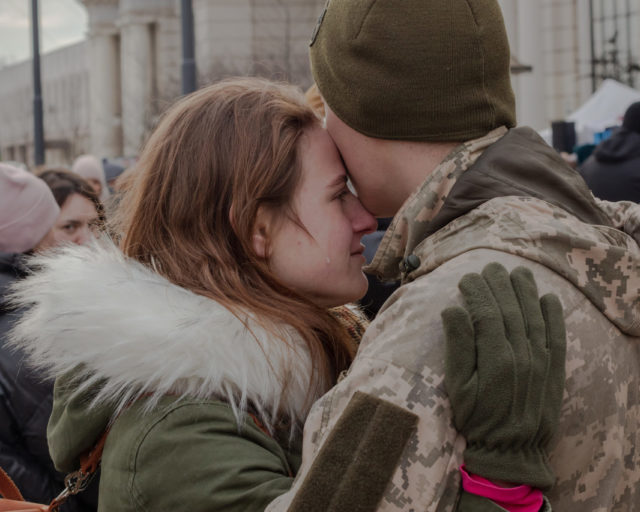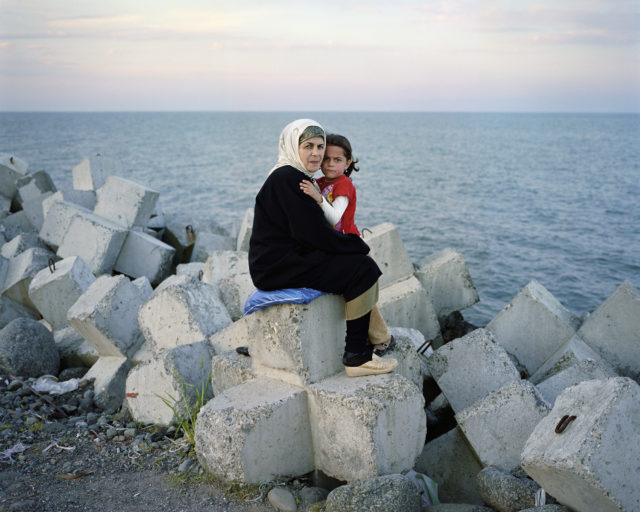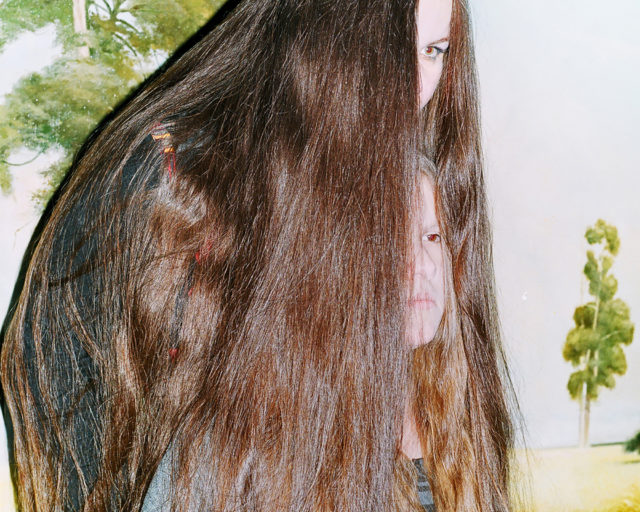Boris Mikhailov, Untitled [Self-portrait], from the series I am not I, 1991
This interview was first published in Aperture, issue 220, “The Interview Issue,” fall 2015.
Prankster, performer, and self-taught photographer Boris Mikhailov might be said to embody the archetype of the holy fool—that idea originating in the Russian Orthodox Church and carrying into literature in which someone pretends to be mad in order to offer spiritual guidance. Since he began making photographs in 1965, Mikhailov has continually broken the rules, both formal and ideological, to convey larger truths. He was born in 1938 in Kharkov, Ukraine; years later, in a now-famous story, Mikhailov was fired from his job as an engineer when he was caught using the factory’s darkroom to develop nude photographs of his wife. The body—whether his own or his subjects’—remains a constant presence in his work, including images from the 1970s and ’80s that played with and subverted Soviet-era visual codes. This play was often sexualized, leading one observer to describe Mikhailov as a “surrealist eroticist.”
Throughout his career, his irreverent work has flirted with both conceptual and documentary traditions, employing a range of photographic techniques. Much of this prolific and diverse output was not shown in public until the early 1990s, after the collapse of the Soviet Union. Shortly thereafter, in 1997, Mikhailov began his controversial series Case History (1997–98), which documented post-Soviet Kharkov’s growing homeless population.
Mikhailov now makes his home in Berlin, where he lives with his wife, Vita, his longtime creative collaborator. In May 2015, in Venice, during the opening of the Venice Biennale, curator Viktor Misiano, an old acquaintance of Mikhailov’s, met the photographer in an apartment near the Campo Santo Stefano. Vita Mikhailov was also present and joins in this conversation that touches on Mikhailov’s work then and now, the Soviet dissident poet Eduard Limonov, and Ukraine’s recent political upheaval.
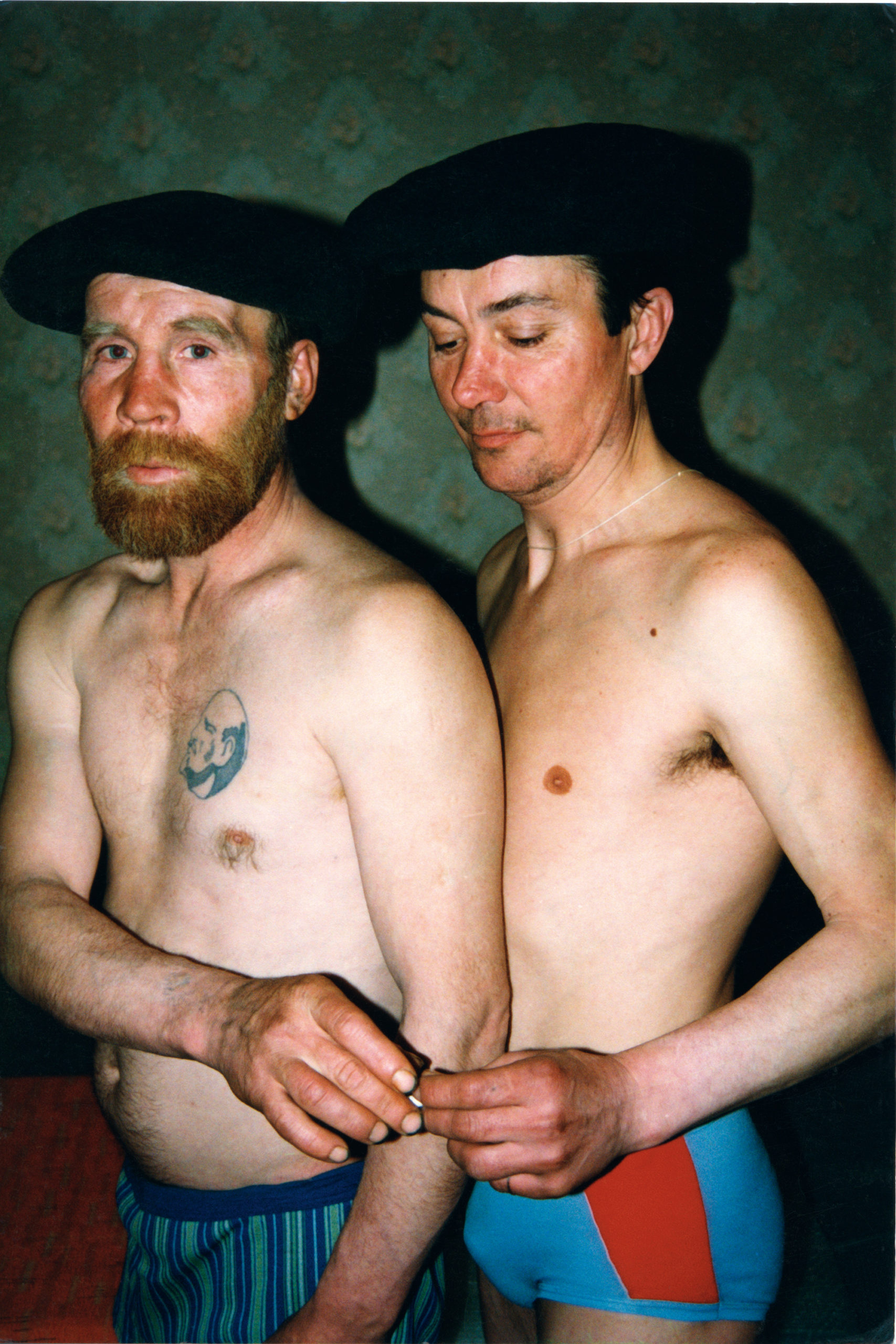
Viktor Misiano: The last time we saw one another was last year in Kharkov, at the Yermilov Centre for Contemporary Art at the opening of an exhibition in honor of your seventy-fifth birthday. I happened to be moderating a lengthy, heated panel discussion on your work. It was impossible to ignore how proud the city is of you, how much you mean to it. And for you Kharkov means so much! It’s your city, after all. And so much of your artwork is tied to this place.
Boris Mikhailov: At one point I spent a lot of time developing this theme and came to the conclusion that Kharkov and I are one and the same. Not only because I was born there, but mostly because, having lived there for many years—though I now live in Berlin—I’ve deeply felt all of its good and bad sides. Maybe I’m wrong—after all, I don’t have a formal artistic education, I came to art from the outside, as an amateur—but it seems to me that there isn’t a serious artistic tradition in this city. There’s just a small museum and an arts institute that hasn’t produced anybody of significance. In spite of all that, Kharkov is a city with lots of energy, a city with enormous factories and scientific centers (as a matter of fact, this was the first place in the USSR to split the atom). This is the first capital of Ukraine. In other words, this is a highly tense place with a disproportionately limited cultural tradition. As a result, there was nothing here to influence me. Living here, I found myself in a sort of zero state— a state of total openness. If there was anything of importance here for me it was the local literature and song. This is where the singer [Klavdiya] Shulzhenko was from; she was an idol for the entire country. Though we have to admit she was rather vulgar, very much so in fact. Just like the poet [Eduard] Limonov—a bright writer, but even he is vulgar. So I think vulgarity is one of the particular characteristics of this place, since it doesn’t have a cultural tradition, but it does have energy and ambition. In some sense this vulgarity can even be considered revolutionary.

Misiano: It’s good that you mention Limonov; I always thought you two had a lot in common. In fact, he has a story, “East Side, West Side,” in which over the course of thirty pages he describes walking through New York’s Harlem at night. Nothing of note happens—he just re-creates his visual impressions—but it’s impossible to tear oneself away from these unbelievably vivid descriptions. The way he builds these descriptions is like a film reel, they develop before us like a literary photographic sequence.
Mikhailov: As soon as I got to New York, in the late ’80s, I went to Harlem. Everybody told me not to go, and if I went, not to take pictures. Of course I went, and I went with a camera. I photographed from the hip, without looking through the lens. That was a special camera, a Horizon—prolonged exposure, panoramic views. I was incredibly curious; I’d never seen anything like it.
It seemed important to me at that time to break out of the traditional role of the photographer who is removed from life. I wanted to raise the question: Why do you have the right to photograph other people?
Many years ago in Kharkov, I was at a party where there was a student from Africa. Then, at my job as a factory engineer, I was warned that if I was ever found in the company of foreigners again, I would be fired. Because of that, I was extremely interested to find myself surrounded by African Americans, to understand how they live—what’s the atmosphere of this neighborhood? All of a sudden, as I was crossing the street, right in the middle of it, some tall person suddenly hit me in the mouth unexpectedly with his huge fist. My ears were ringing. I was stunned and started yelling; he grumbled something at me and walked off. Then, I hadn’t walked more than fifty meters before some other guy, squatting by a wall, shook his finger at me and also grumbled something. I had a feeling like he already knew what had just happened to me. So that punch in the face was what I remembered more than anything, for a long time, about my first trip to America. And the most amazing thing was that nothing even hurt from that punch. It was a kind of warning: “Careful, buddy, we have our own way of life here.”
Misiano: It’s a very telling story. It seems that the life you were interested in exploring entered into dialogue with you, answered your call. I was also in Harlem during that same time, in the late ’80s, but no one laid a finger on me. That’s precisely what, in my understanding, you men of Kharkov—you and Limonov—have in common, this unbelievable ability to unmask the vital pulse hidden beneath reality’s shell.
Mikhailov: Worse—we bring real life upon ourselves! In one of his poems, Limonov has this line: “You smelled like Iranian piss.” At the time, this frank and urinary image, completely unheard of then, won me over. Then, when I met the woman to whom these lines were dedicated, I tried to photograph her, but nothing turned out. Yes, there’s definitely a connection between me and Limonov: We’re both concerned with letting go of aesthetics and outward beauty. What’s most important for us aren’t outward appearances but the innermost depths of life and humanity.
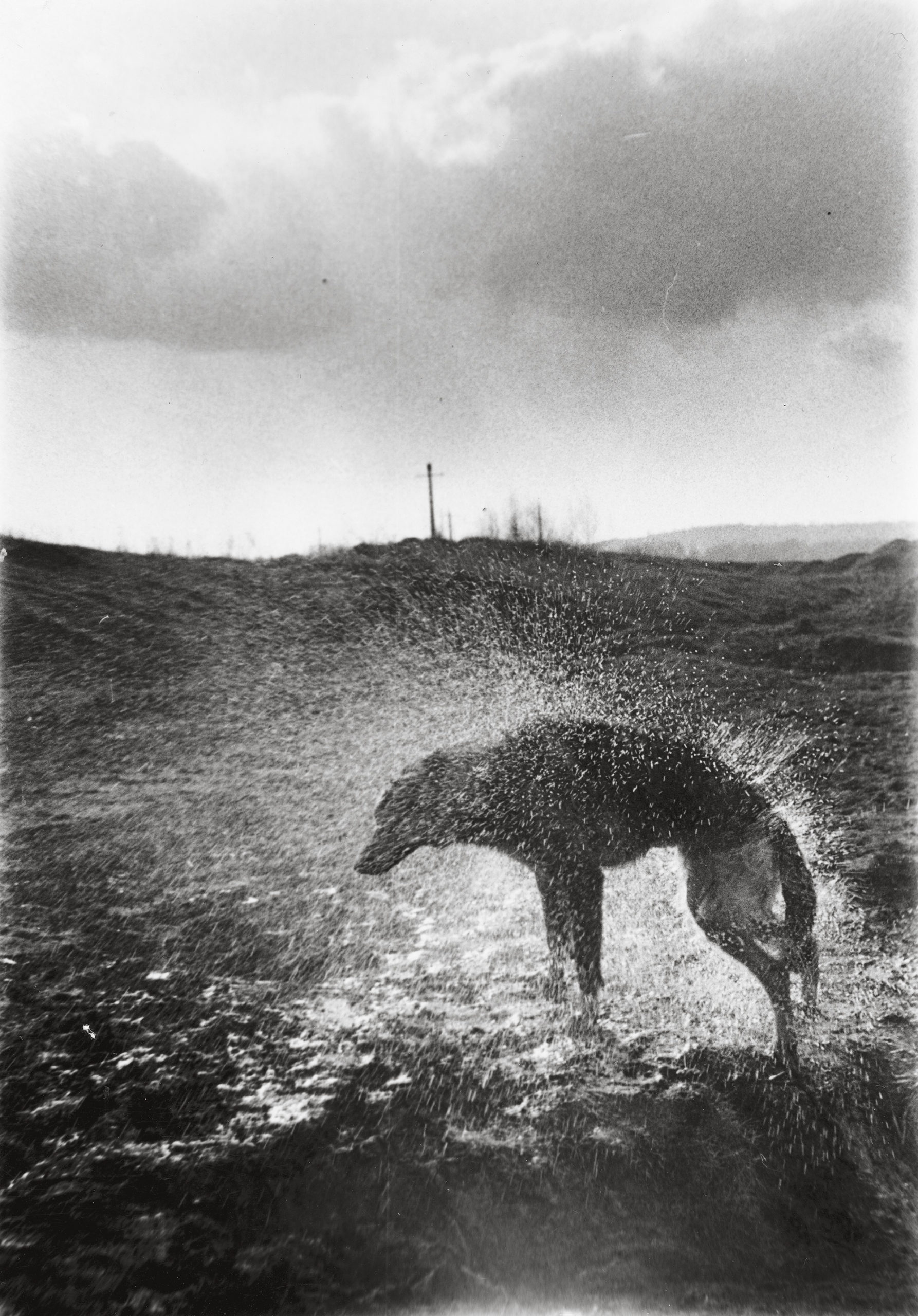
Misiano: There’s also another thing you have in common. Limonov has a tendency to turn life into a performance, presenting himself as an artistic persona. You can’t deny that elements of this are also very much part of your being. For both of you life is a performance, it’s a stage on which to perform.
Mikhailov: I can’t say that the performative was initially embedded in my work. Early on in my career I made a few self-portraits, and in some of them I even depicted myself as historical or literary characters, but I stopped making that kind of work. But then came 1991—the time when the Soviet Union fell. That’s when I made a series called I am not I, in which I once again began photographing myself. But why did I create that work? Probably because with the country changing, I felt it was necessary to uncover a new protagonist. But this was a protagonist who was sort of trying on the icons of the superheroes of Western mass culture—like Rambo, etc., and he was an antihero at the same time. It seemed important to me at that time to break out of the traditional role of the photographer who is removed from life, which he photographs as if from the outside. I wanted to raise the question: Why do you have the right to photograph other people? And who are you? That’s when I started featuring myself, suggesting in these images an answer to my own question: the part I play, that is who I really am.
Misiano: Do you mean to say that the fall of the foundations of Soviet life also broke the foundations of photography, broke the traditional subject-object interrelation between the photograph and reality? Very interesting idea!
Mikhailov: Yes, what was happening in the country at that time had a huge impact on me. It forced me to position myself differently in life and in photography.

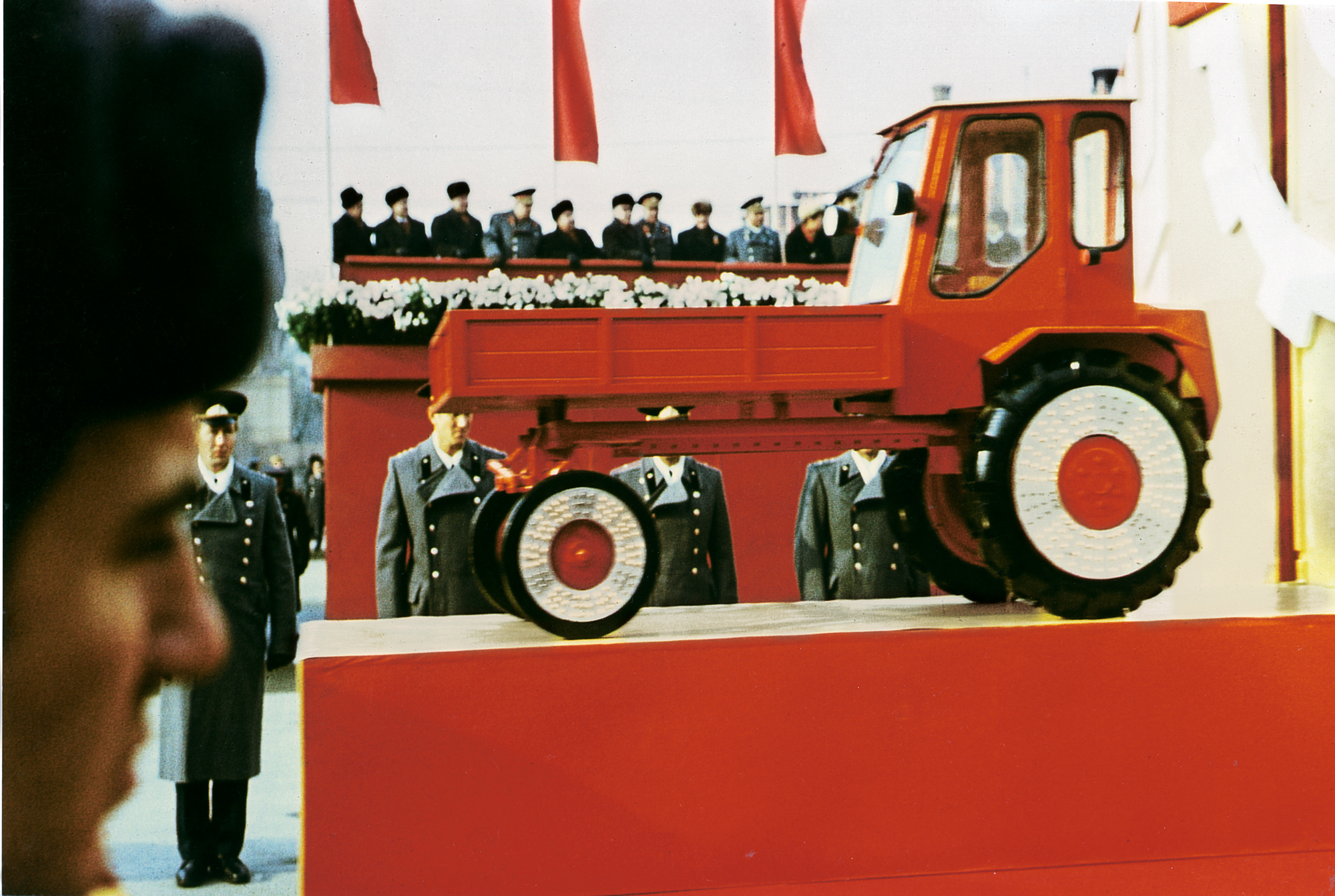
Misiano: And yet, when I was talking about the performative, I was referring not only to your appearing as a character in the photographs but also to various forms of artistic intervention that you have employed in the developing process. For example, in The Red Series (1968–75), you began painting over photographs of Soviet demonstrations. Ilya Kabakov [the Soviet-born American Conceptual artist] was very enthusiastic about this series. It was, he said, as if the artist-protagonist is expressing himself through this method. That he, i.e., you, imagines himself as some superloyal Soviet citizen who not only docilely attends official parades, but also innocently colors the photographs of those parades to make them more joyful and festive.
Mikhailov: I actually adopted that technique because it harks back to an earlier epoch in the history of photography when it was still black and white and customary to color photographs in. I was doing that sort of work by commission and receiving lots of orders. Of course, when I started using this method on my own photographs, there arose this element of playful liberation of which you speak. But there’s another important point here: Oddly enough, this doctoring of the photograph, this supposedly awkward coloration, brought the image closer to reality. It made it a bit vulgar or unrespectable (as a matter of fact, that same anniversary exhibition in Kharkov was called just that—Unrespectable). And that’s how life really is—it’s vulgar and unrespectable.
Vita Mikhailov [Boris’s wife]: Viktor’s question had a point that you overlooked. It’s not just that you perform in your own photographs but that you look at life itself as a performance. For me, for example, a person on the street is just walking, but to you, he’s performing.
Misiano: That reminds me of a book by the anthropologist Alexei Yurchak, Everything Was Forever, Until It Was No More (2005). It describes how, in the later Soviet period, people who observed regime-imposed social rituals, such as May Day demonstrations or trade-union and party meetings, rather than interpreting them as roles to be performed, were actually changing the meaning of the social order. That’s precisely why, though it seemed to everyone that the USSR would last forever, no one was surprised when it ended.
Mikhailov: I’m not sure the word performance pertains to me. I’ll put it differently. After the Khrushchev reforms of the late 1950s and early 1960s, it was clear to me that everything had to change. And though on the surface everything was becoming frozen, I was still constantly looking for signs of actual change. That’s why all of life—built as it was on contrasting rituals and changes—seemed so unreal, at times almost carnival-like. Life was kind of struggling to break out of narrow forms that were being imposed on it externally. That’s precisely what I was trying to show in my work.
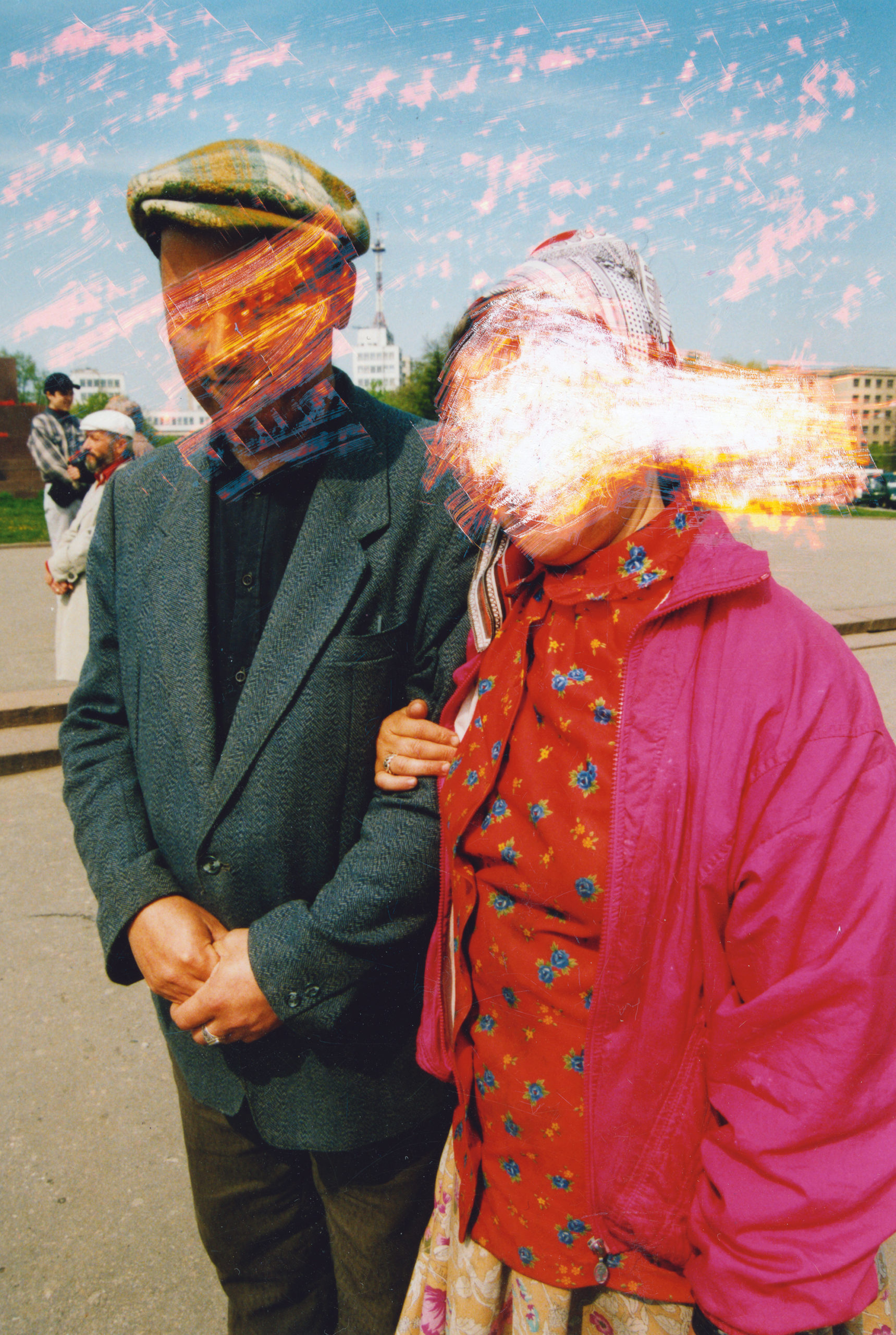
Misiano: That’s probably why your Soviet-period work is free from the photojournalistic clichés that aimed to expose the repressiveness of the Soviet regime. For you that life is still vital, playful, and comical, at times even to the point of idiocy.
Mikhailov: Still, life then was clouded by a sort of tension. After all, the beginning of my photographic career brought me face-to-face with the KGB. I wasn’t jailed, but I was fired from my job and the visit by the KGB to check on me disturbed my inner peace. I felt their watchful gaze all the time. Especially when I traveled to Lithuania to attend photo-festivals.
Vita Mikhailov: Moreover, at that time not only the regime but all of society exercised control over what he photographed. If Borya would be photographing sunsets, there would have been no objection. But when he photographed something out of the ordinary, then anyone could come up to him and ask: What are you photographing here? That sort of random monitor passerby was always looking over our shoulder.
Mikhailov: Every time I take a picture of unusual things—some kind of rusty pipe on the street—I feel a certain degree of tension, I feel a certain degree of fear. Society continues to control you—controlling behavior for which it can’t find a reasonable explanation.
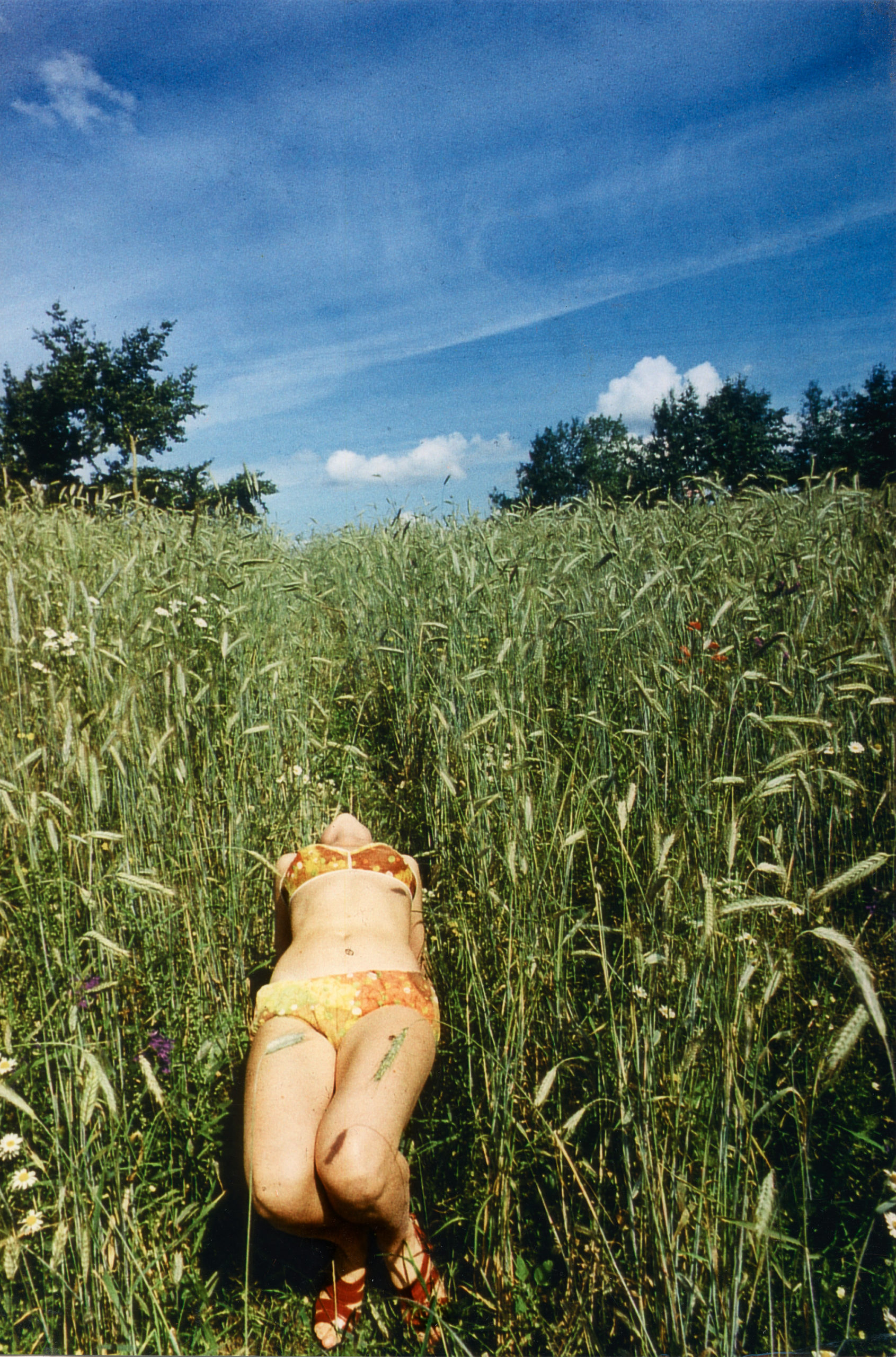
Misiano: Society controls your gaze—where and how you should be looking.
Mikhailov: It raises the constant question—to photograph or not to photograph? Will you dare or won’t you? And we’re not just talking about political or social conduct, we’re talking about photographs, about conduct in photography. You know you can’t photograph in a certain way, but you feel that the photograph is demanding that you do. You have to do it! To photograph precisely in this way!
Vita Mikhailov: In the 1950s in Kharkov there was a sadly famous event. A group of young people dreamed of a different and freer life; they listened to Western music, engaged in creative projects, and so on. They were arrested and some of them were imprisoned. We later saw their case file, which contained a lot of photographs: these young folks had taken pictures of themselves on the beach in bathing suits. As a result, according to what was written in their official case file, they were charged with taking “Western poses,” and were sent to prison on pornography charges. That was the atmosphere at the time when Borya took up photography.
Misiano: And then there was your series Suzi etcetera, from the early 1980s, for which you could easily have been charged with making pornography. And your Crimean Snobbism series from 1982, in which you and your friends are depicted on a carefree vacation messing around and acting out the most idiotic mise-en-scènes; couldn’t you say that in this series, you’re taking on “Western poses”?
Mikhailov: I would say these were exercises in liberation.
Misiano: But the series was created during the Soviet period?!
Mikhailov: Yes, it was even before perestroika. But I showed that people had already prepared themselves for another way of life; they had already begun living it.
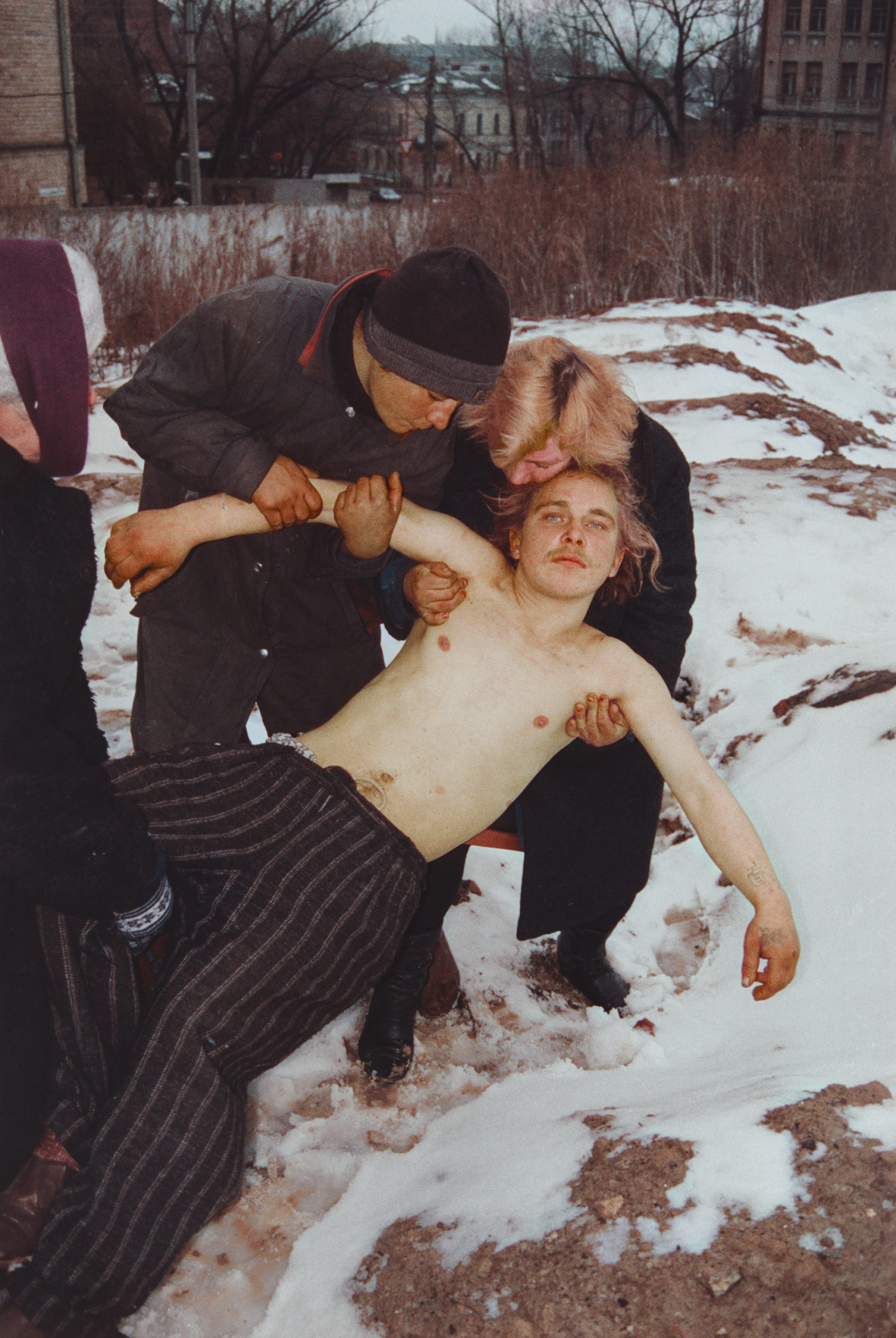
Misiano: Now, it seems, is the right time to talk about Case History. In these dramatic images, once again you challenged yourself to show the new post-Soviet life. I remember after you first exhibited this series that you were very concerned with how ethical it was to make this work and exhibit it. But I think that it makes no sense to come back to this topic at this point. What I would like to draw attention to, given this line of our conversation, is the fact that in Case History, you, in your constant quest to dive into life, reached, perhaps, the maximum depth. But again you not only show images of reality but also enter into a kind of relationship, implicating your protagonists—the homeless of Kharkov—in some sort of action.
Mikhailov: When Vita and I were shooting that series, it made me think of the American Depression, when the American government actively recruited photographers and commissioned them to photograph what was happening, to capture these experiences for history’s sake. I was motivated by this precedent: I felt that it was important to photograph what was happening. And then yes, of course, in the new poverty, I saw a new protagonist. Of course there had been drunks on the street before, and homeless people, but they were less noticeable, there wasn’t as large a concentration of them. Yet it was difficult to approach them because Society, with a capital S, tracked your every move, as we mentioned earlier. The reason I was engaging with them was because it wasn’t possible to photograph them stealthily—that would have been impolite and unethical. Communication was necessary. There arose a need to overcome some inner resistance—if you can communicate with them, then it means you can cross some sort of boundary.
Misiano: Although your motivation was photography, you arrived at a particular code of ethics, a new way of living. You felt that the new protagonists required a new approach to the work, and this in turn assumed a new kind of human relations.
Mikhailov: Yes, that’s true. Also, in those years, anybody could suddenly find themselves in such a situation. Vita and I were lucky, but it might have been otherwise. Hence the social barriers between us and them were very relative. For that reason photographing these people required a tremendous amount of empathy and respect on our part.

Misiano: You’ve spent many years living in Europe. Have you been able to feel life here as deeply and profoundly as you were able to in your home country? And are you able to interfere with life here, to play with it as much?
Mikhailov: There’s no question here: the difficulty of photographing in the West is my lack of knowing the language.
Vita Mikhailov: It’s not just a matter of language. It’s a matter of context. Your place is there: you know it and understand it. Borya takes fantastic photographs of Berlin and it will probably become clear later on that no one else has captured such a Berlin.
Mikhailov: Yes, of course at home I have a better sense for the changing times, the rise of something new—and this has always been important to me. Although not too long ago, a year ago, it was easier for me to photograph in Berlin since I felt a glut of information back home. I wasn’t feeling anything new. But when all of the political events began in Ukraine everything changed again. We’ll travel back there soon and perhaps will encounter something new there.
Vita Mikhailov: As a matter of fact, after making Case History, between 2000 and 2010 we completed a very good series called Tea Coffee Cappuccino, which we then compiled into a book (2011). It reflected that new situation, which replaced the transitional 1990s.
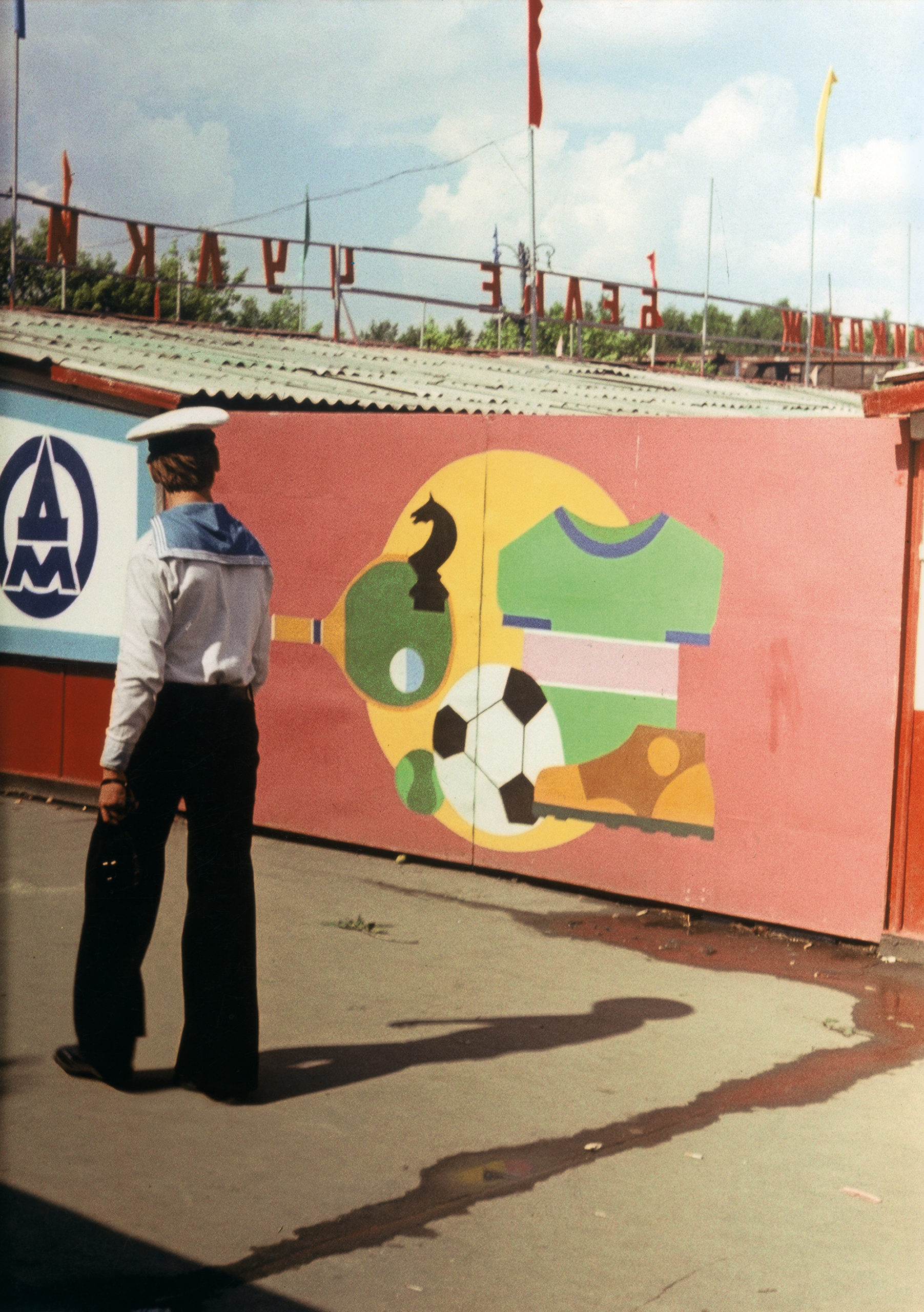
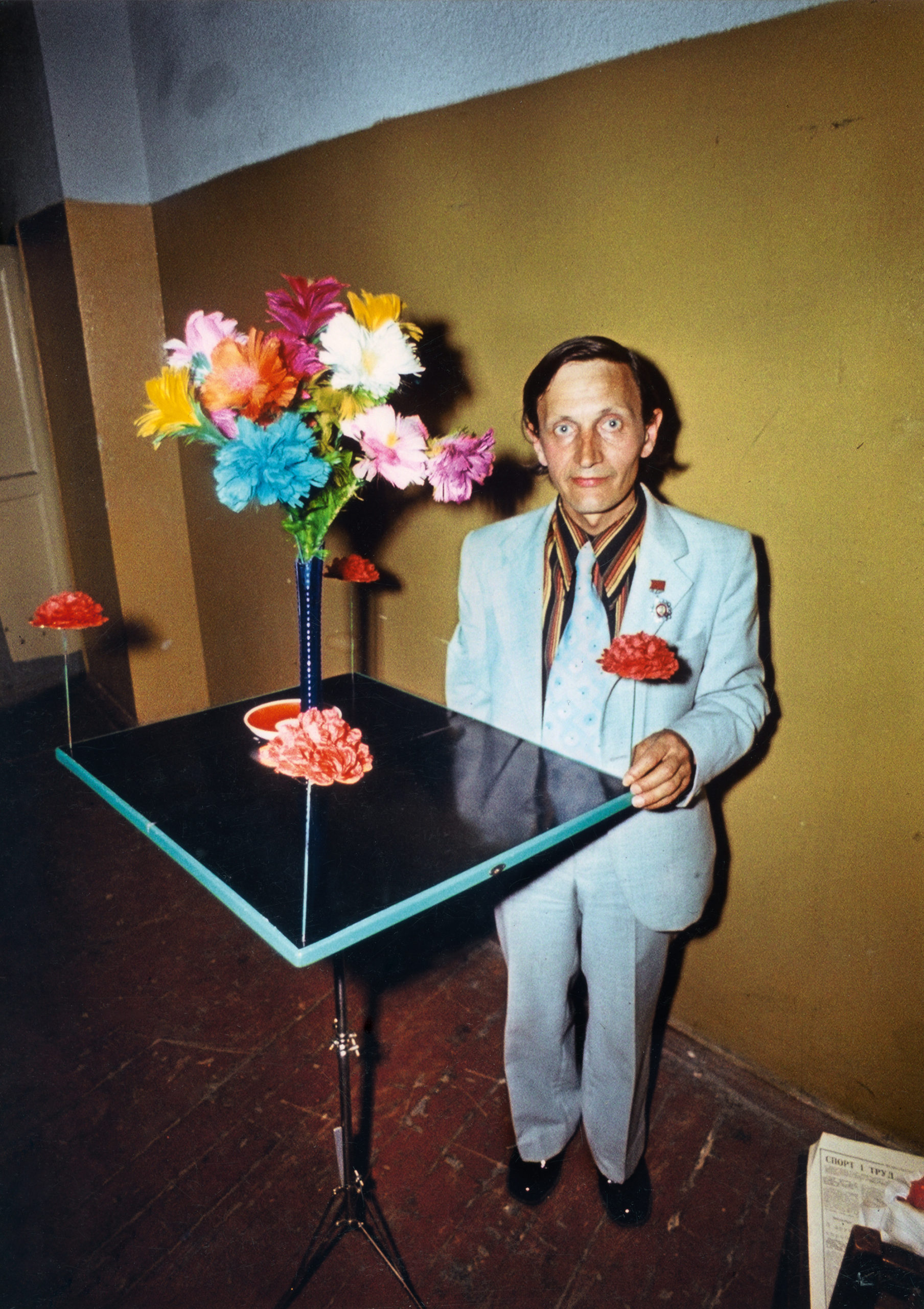
Misiano: I remember that series: it showed the streets of Kharkov, its markets and flea markets. And while it was clear from the photographs that a prosperous life was still far away, they projected a tremendous amount of great positive energy. It was a bright contrast with Case History, and it definitely represented a new period of post-Soviet life. Although you did show what that epoch ended with in your 2013 series dedicated to the protesters in Maidan [Square, Kiev], which was exhibited at the Hermitage in St. Petersburg in 2014 as part of Manifesta 10. Once again, you showed these two themes that we’ve been discussing today: an organic element of life that reveals itself from behind the shell of reality, and how that inner life takes on the veneer of a social performance. In this work, the Maidan protest movement appears in a sort of dark spectacle, almost gothic, controlled by irrational forces. These photographs show the fragility of the norms and conventions ruling the social order, how easily they give rise to something dark and frightening.
Mikhailov: Yes, I tried to accentuate all of this through the exhibition. But I have to say, the people at Maidan sensed all of this and worried about it. It was clear that they were preparing themselves for something; they remained in tense anticipation. And of course in large part this was the foreboding sense of war. People were very worried about it and I worried alongside them.
Vita Mikhailov: Don’t forget, these photographs were taken in December, before the bloody culmination of events. [The protests eventually led to the Ukrainian revolution in February 2014.] Even then there was a fire burning in the square, and smoke was rising, but people were simply warming themselves around it. There were a lot of strange things there. That’s where Borya photographed a person who ended up being one of the first victims. He was the first person to die at Maidan.
Mikhailov: And there were thousands of people there! Ultimately, the photographer needs to get lucky; what’s important is the moment of photographic luck, though of course with reference to this situation it sounds somewhat sacrilegious. I’m not talking about mysticism, but some kind of inevitable event. When you’re open to life, it responds to you. That is what an intuitive possibility of photography is—to crawl deeper into the depths of life than what you see on its surface. I can’t say what this is and how it occurs, but that’s how it is.
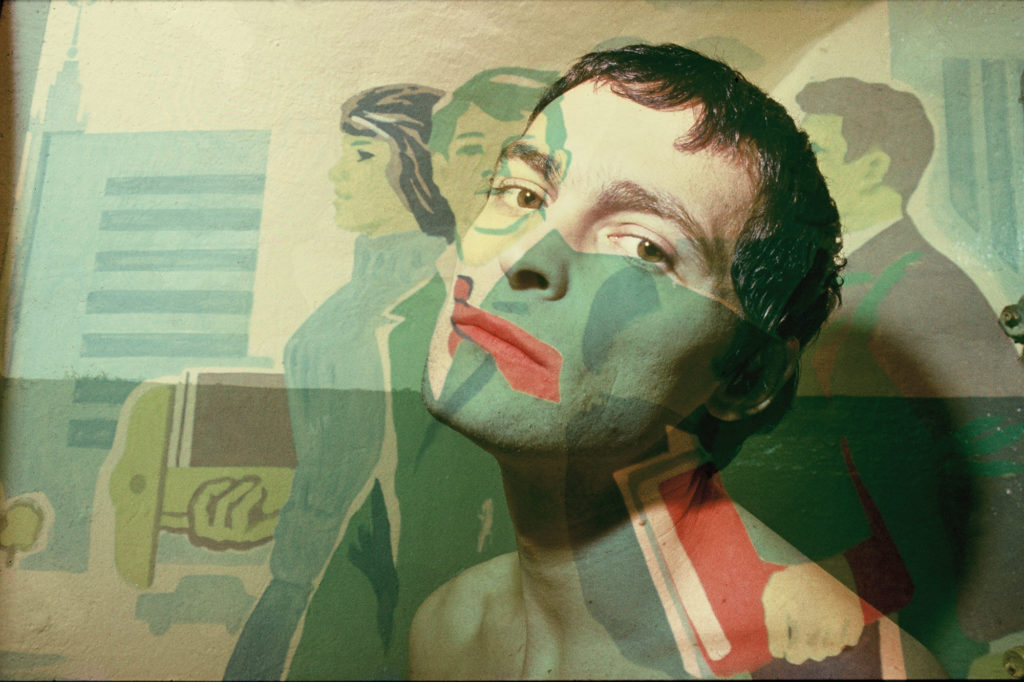
All photographs courtesy the artist
Misiano: But isn’t the camera always an extension of your gaze, which is diving deeply into life?
Mikhailov: Yes, but it’s important to keep in mind that without the camera this diving would be impossible.
Misiano: On the other hand, you always trusted chance. Let’s recall your series from the late ’60s and early ’70s, Yesterday’s Sandwich—your early experimental series—to which, insofar as I understand, you’ve been returning conceptually of late. In those works you randomly placed one image onto another, not knowing in advance how it would turn out. And it ended up being extremely evocative.
Mikhailov: I can’t explain it in theoretical terms but this has always interested me. Photographic accident may be more interesting than a consciously constructed collage. I was recently thinking about this. You photograph one subject, then another, you place them between one another and this unintentional connection turns into a story about life in its entirety. And this is all borne from chance, and this chance is photography.
Translated from the Russian by Elianna Kan. This interview was first published in Aperture, issue 220, “The Interview Issue,” fall 2015.














